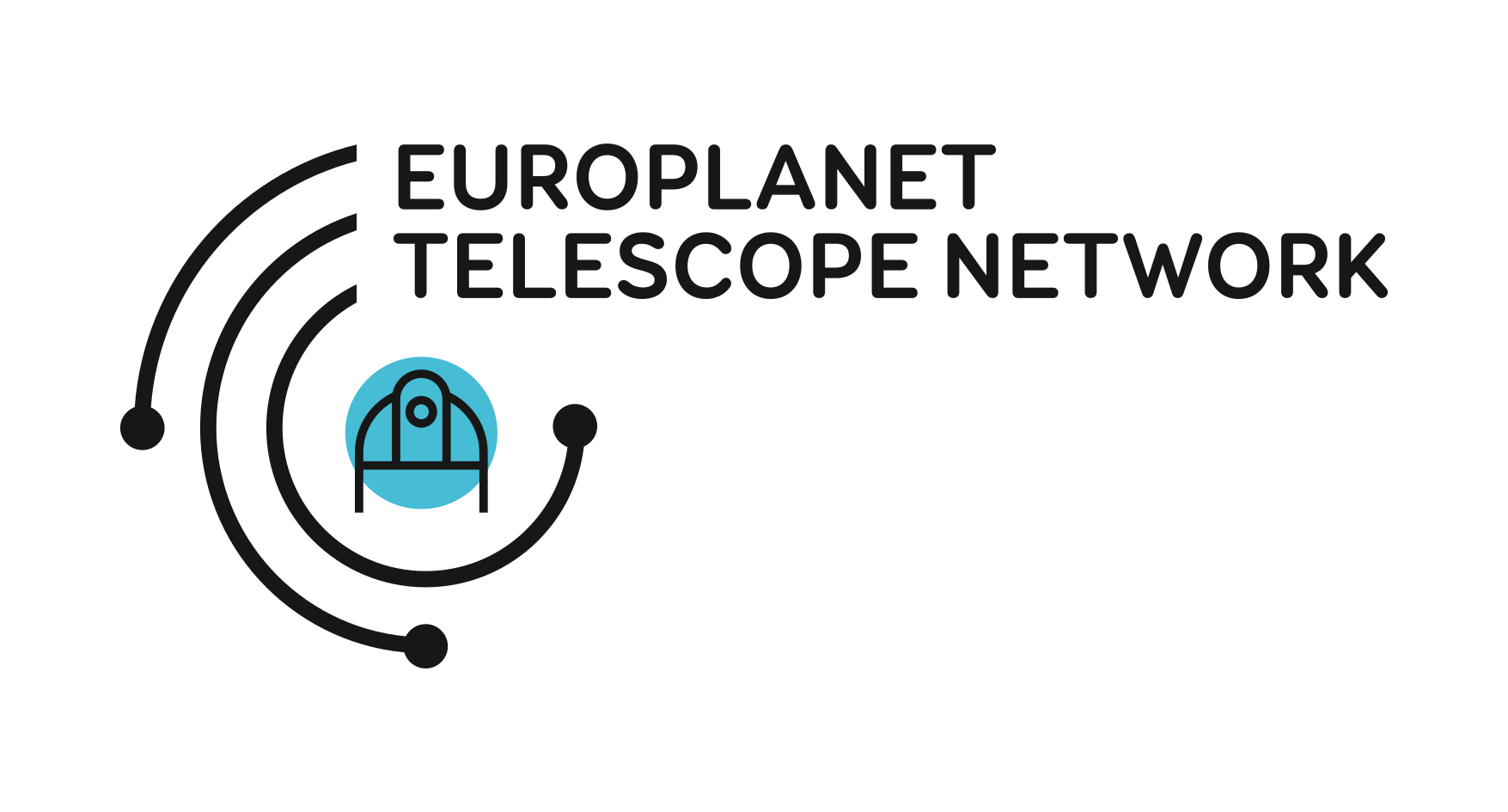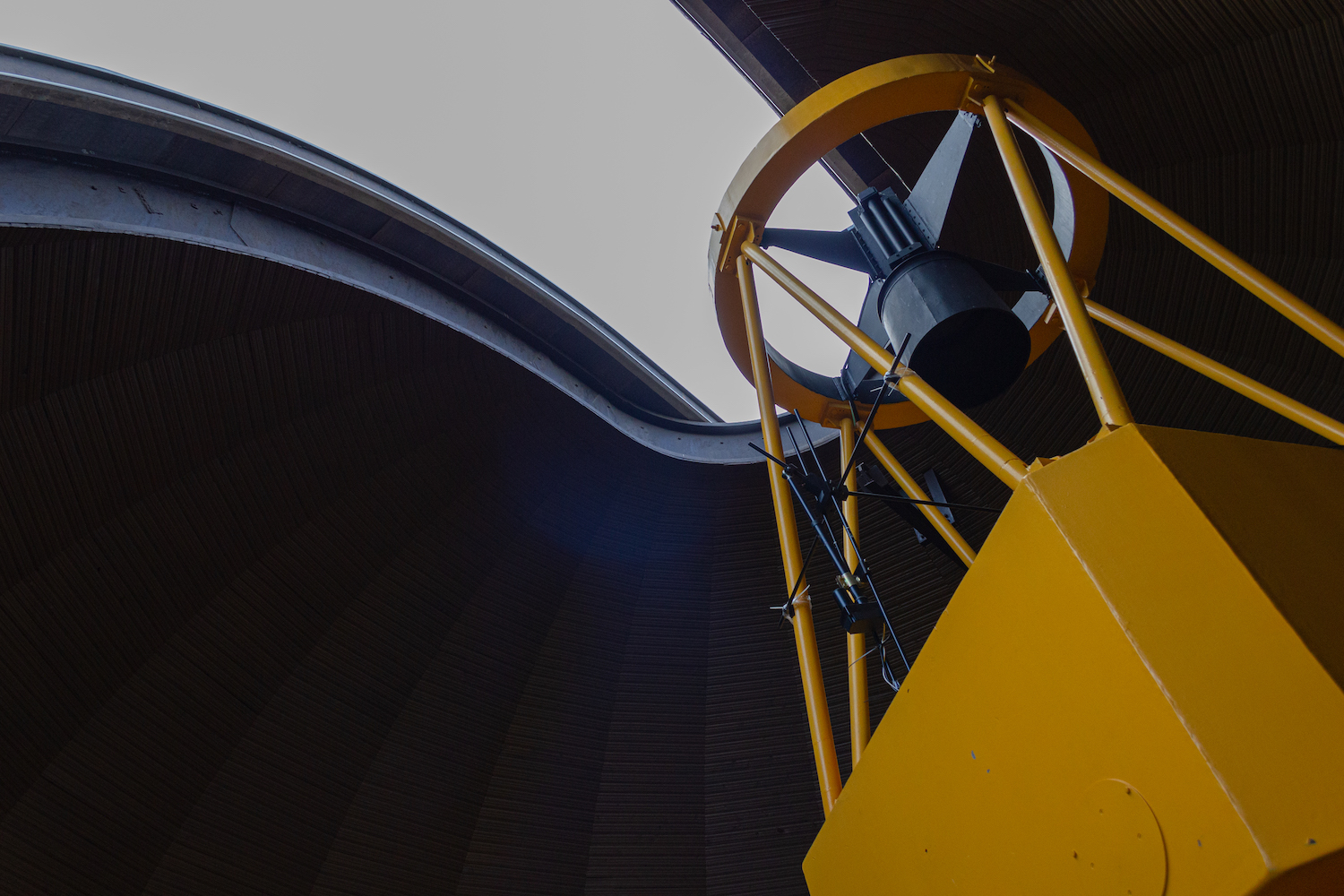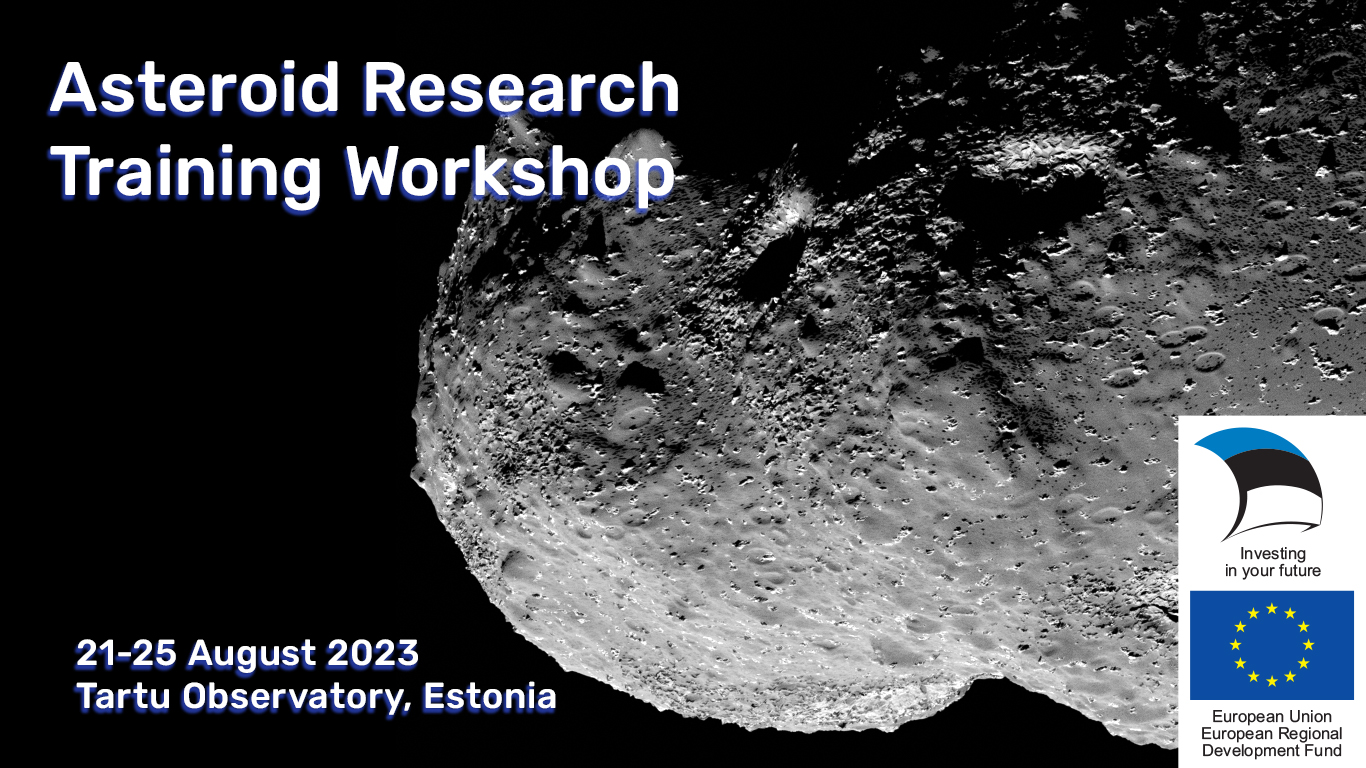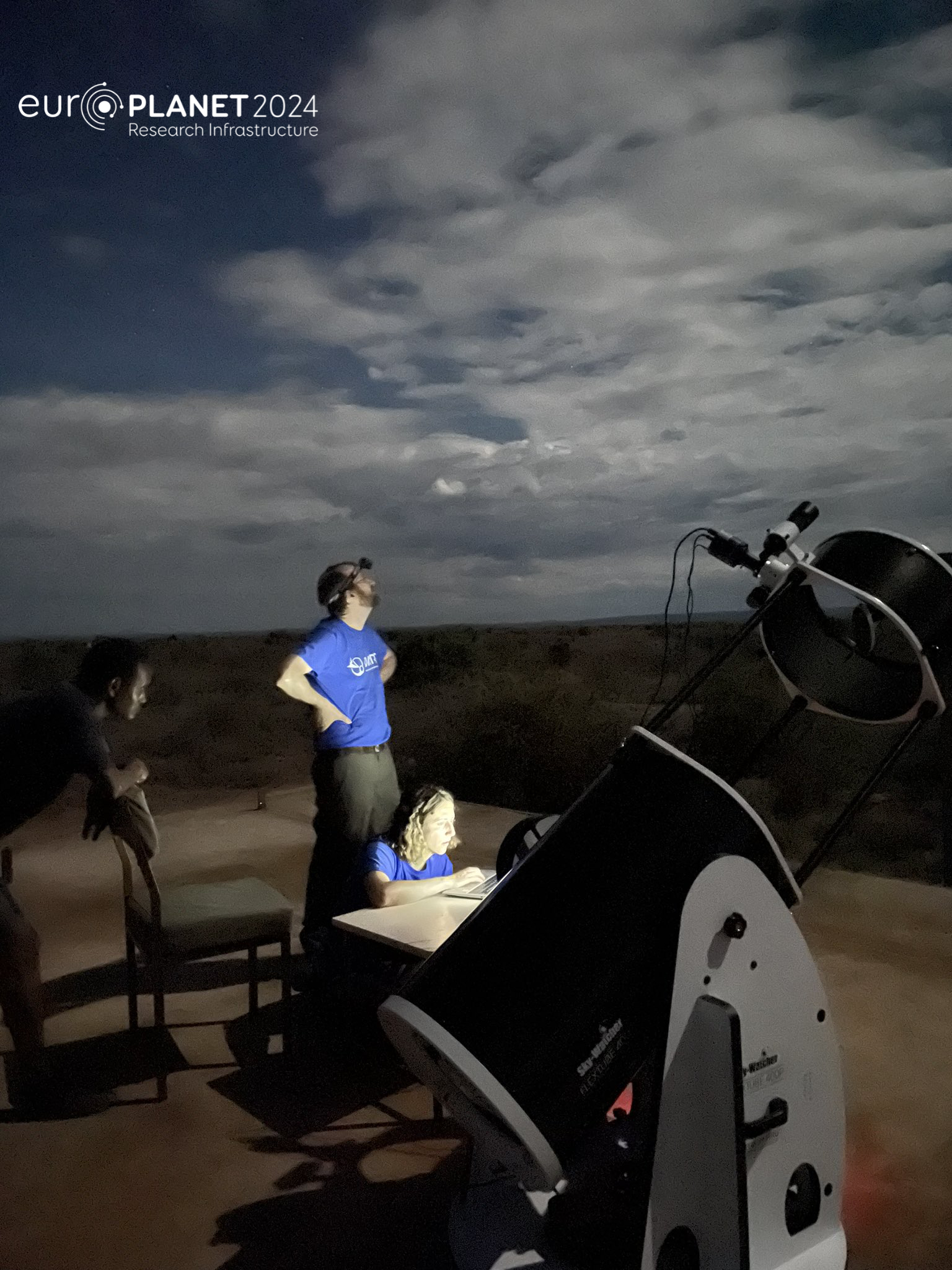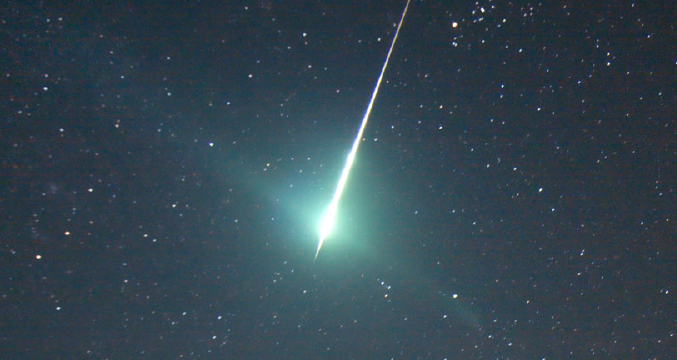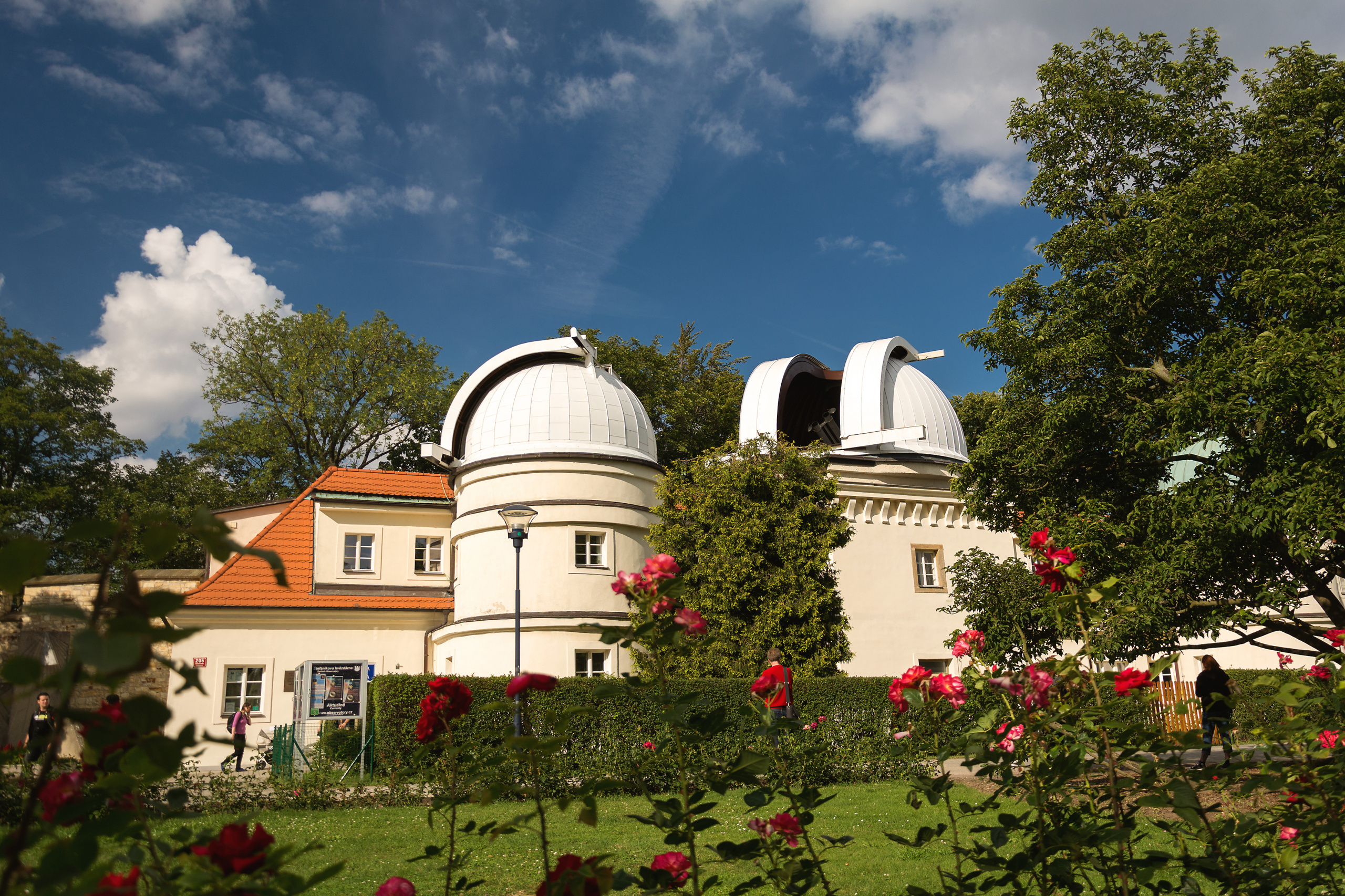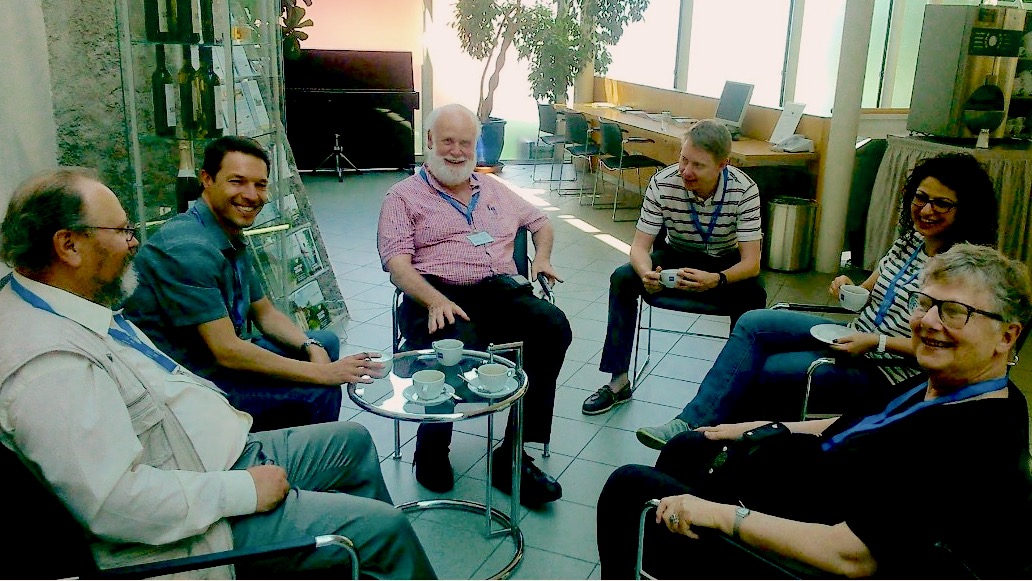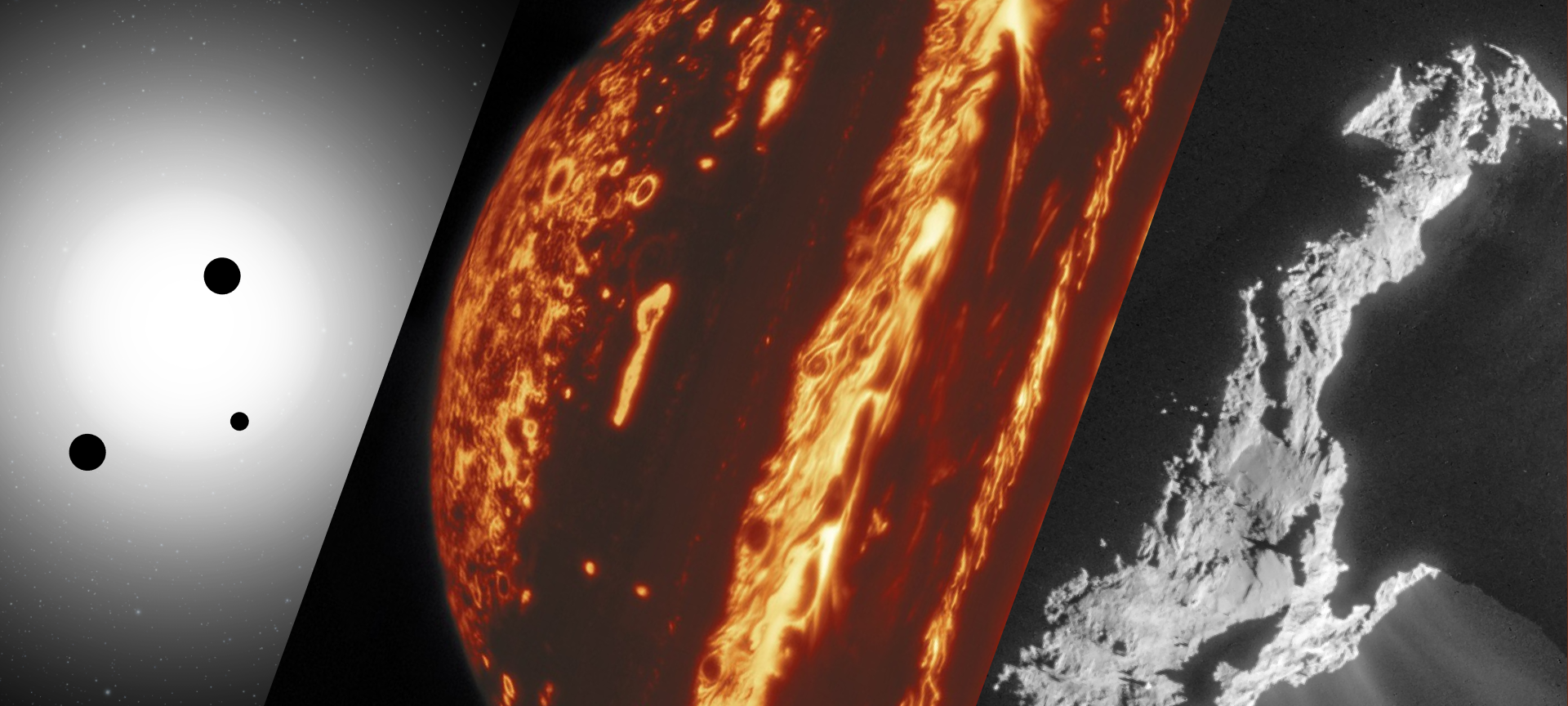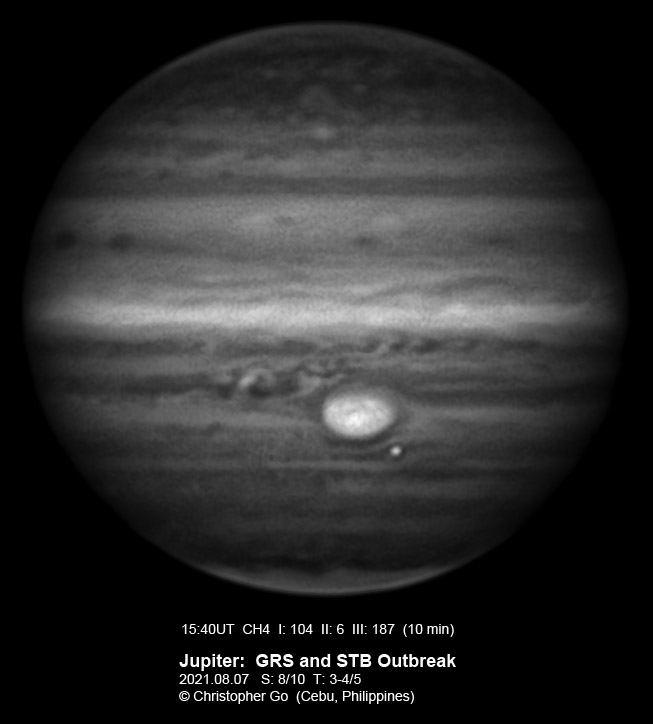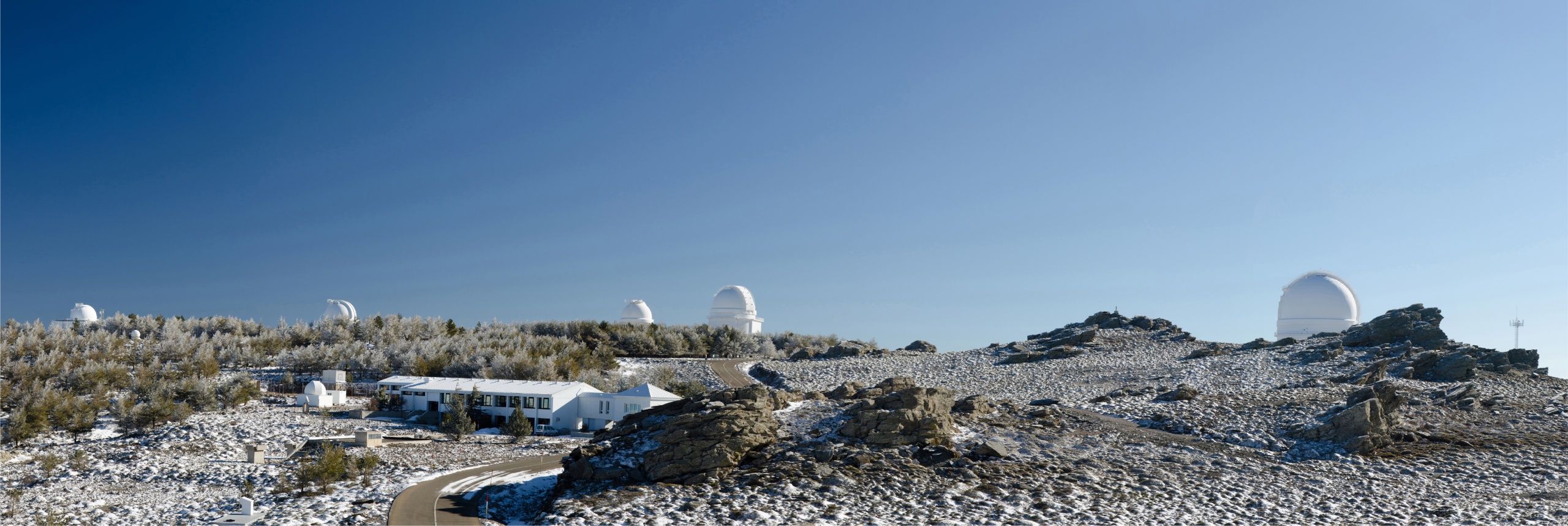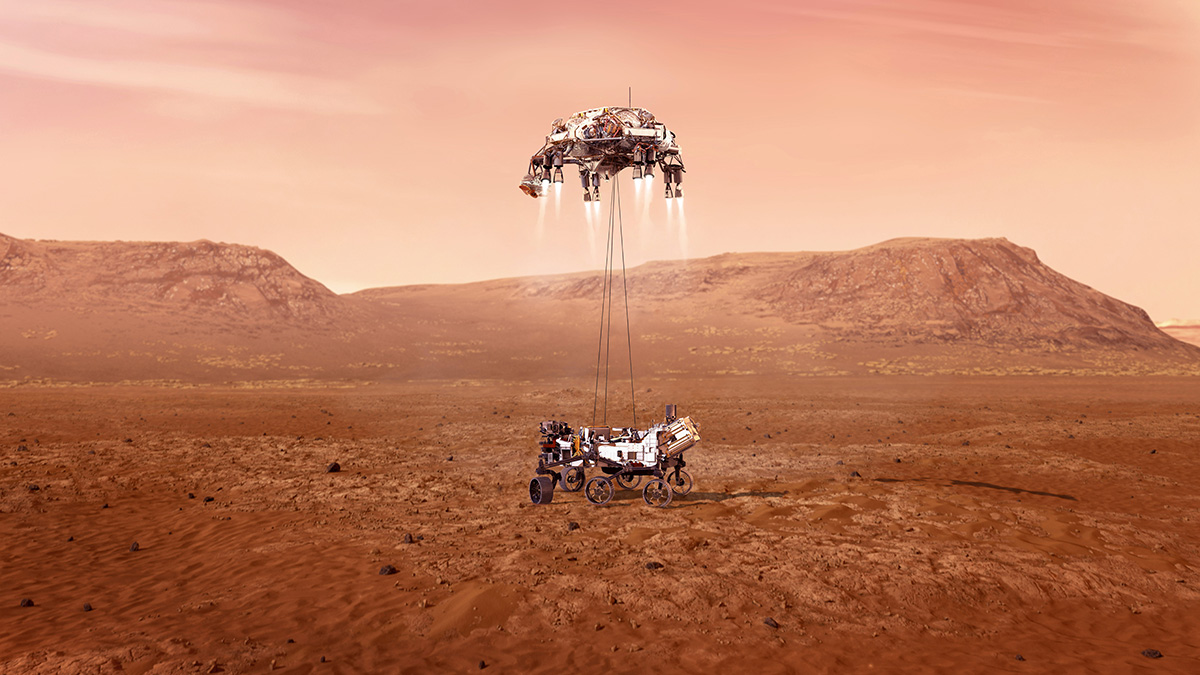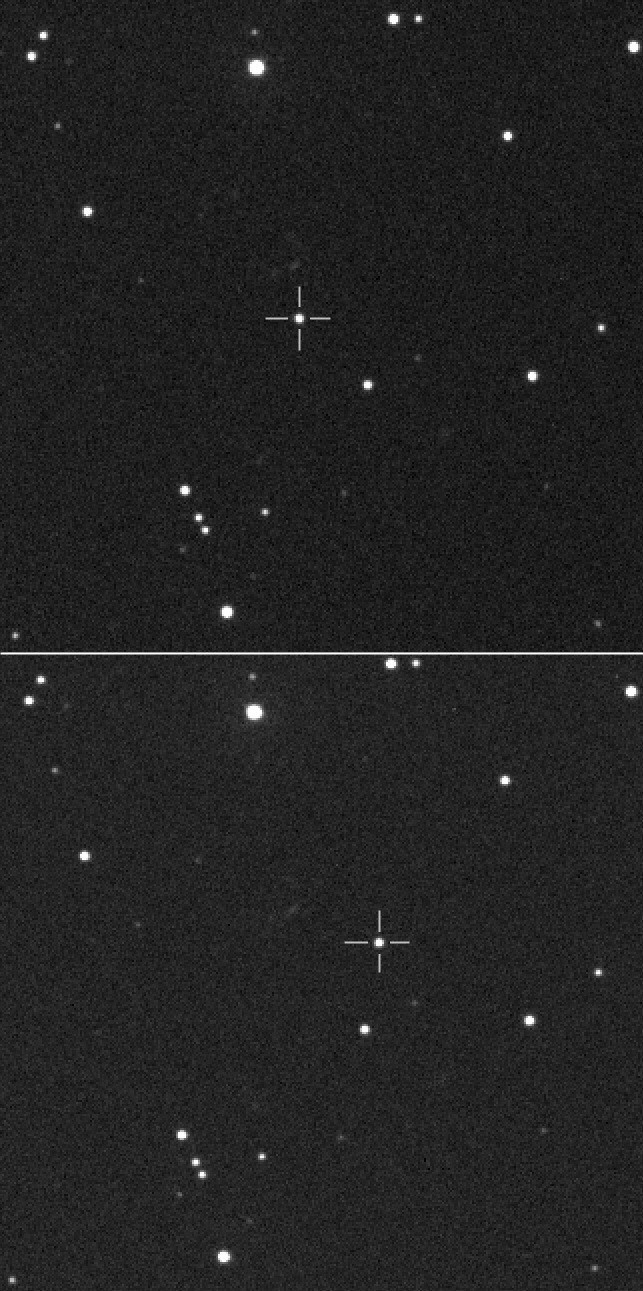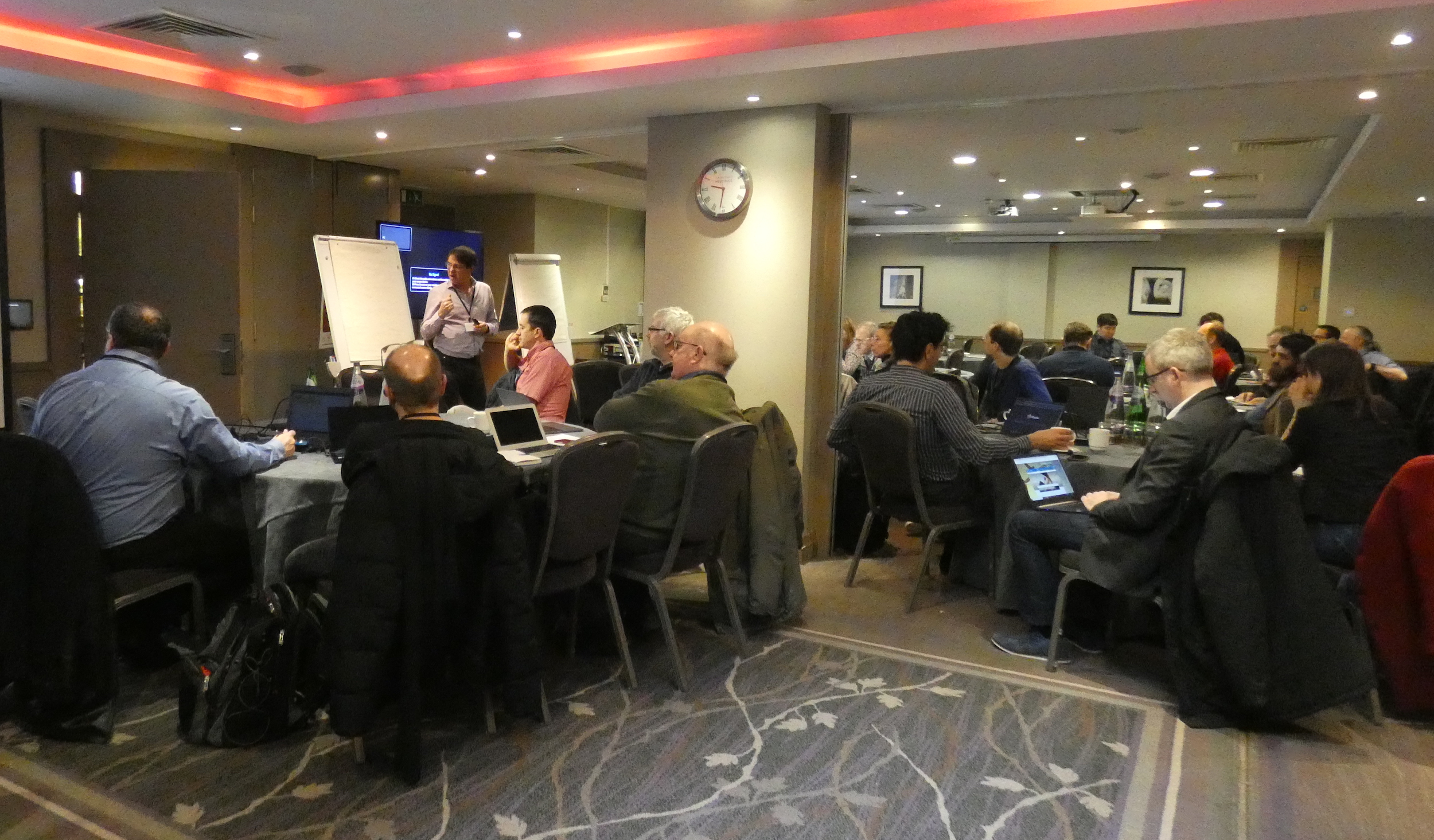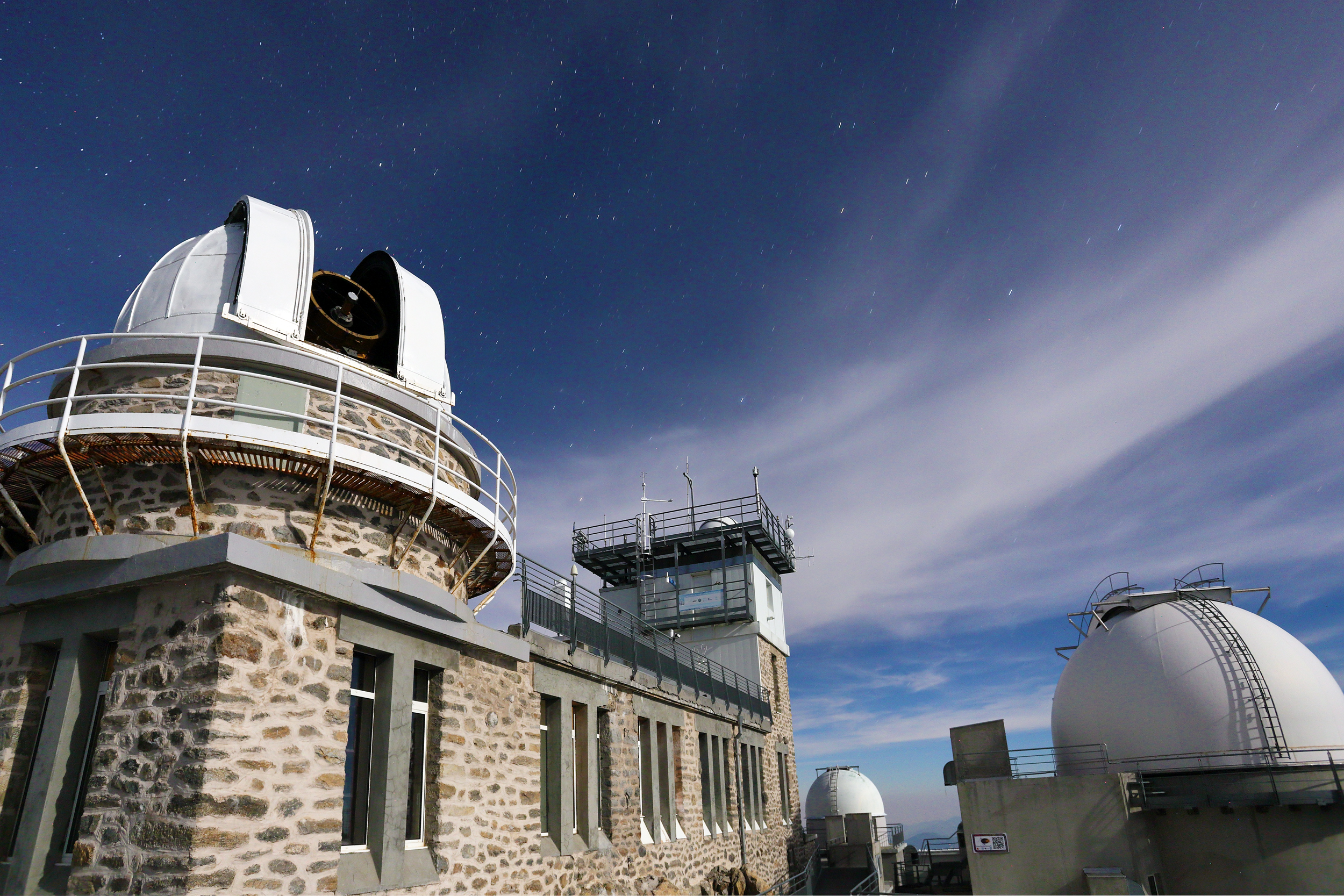Europlanet Telescope Network
**Europlanet Telescope Network – Rolling call for submissions now CLOSED.**
Ground-based observations play a significant role in the study of planets, asteroids and comets. Many planetary science targets are relatively nearby and bright compared to other astronomical targets, but the scientific outcome of their observation requires either long-term monitoring (e.g., atmospheric activity of solar system planets) or very precise timing (e.g. asteroids and comets). This combination of characteristics produces a unique set of challenges, as it matters both where on the Earth one observes from and precisely when. However, relatively small telescopes can produce first-rate science.
Europlanet 2024 RI will organise the cooperation of a network of small telescopes to facilitate and coordinate observation campaigns related to different planetary science topics. It will alert appropriate facilities of opportunities, and ensure that suitably trained observers are available.
The main objectives of the Networking Activity NA2 Work Package of Europlanet 2024 RI are:
- To coordinate a network of small telescope facilities (telescope diameters around 0.4 – 2 m) to react fast and effectively to observational alerts.
- To coordinate professional and amateur long-term observational campaigns and time-constrained observations of Solar System objects, widening the participation of amateur astronomers in planetary science.
- To train and support amateur astronomers and integrate them into the planetary science community.
- To ensure that observational data of small telescope facilities is made available via VESPA.
- To embed the network in the activities of Europlanet 2024 RI, the Europlanet Society and the wider planetary sciences community in Europe and beyond.
NA2 Call for Observations
NA2 provides the opportunity for funding observation nights at telescopes within Europlanet Telescope Network reimbursing travel, accommodation and per diem of the observer, and service costs of the observatory.
The NA2 Call for Observations is now CLOSED.
The NA2 Science Advisory Panel (SAP) will recommend funding of the submitted applications on a bi-monthly basis through an anonymized application system. The NA2 Review Board will grant applications based on the recommendation of the SAP and by taking into account socio-economic measures. All further information on the call can be found on the call webpage. A list of all successful proposals can be found here.
Information on all participating observatories can also be found through this comprehensive telescope table.
If your observatory would like to participate in the Europlanet Telescope network please contact the Coordinator: Günter Kargl, Österreichische Akademie der Wissenschaften, Institut für Weltraumforschung, Schmiedlstraße 6, 8042 Graz, Austria, na2@europlanet-society.org
Note that the Faulkes Telescope Project’s 2m, 1m and 0.4m facilities (accessing the Las Cumbres Observatory, LCO, global network as part of the Europlanet Telescope Network) can be accessed free of charge by educational groups (including schools) who wish to undertake astronomical observations. Please contact fraser.lewis@faulkes-telescope.com for further information and guidance on how to apply for access for educational programmes as part of the Europlanet Telescope Network.
Please also note that there is an independent access programme operated by OPTICON which offers a different telescope suite and which operates in parallel to the Europlanet Telescope Network (more information).
NA2 News
NA2 Science Advisory Panel:
Colin Snodgrass (head), Alessandra Migliorini (deputy), Ricardo Hueso, Oleksandra Ivanova, Detlef Koschny, Monika Lendl, Anna Marciniak, Josselin Desmars
NA2 Review Board
Günter Kargl (head), Grazina Tautvaisiene, Sarunas Mikolaitis
Contact:
Coordinator: Günter Kargl, Österreichische Akademie der Wissenschaften, Institut für Weltraumforschung, Schmiedlstraße 6, 8042 Graz, Austria, na2@europlanet-society.org
Europlanet 2024 RI Coordination of Ground-based Observations is led by IWF-OEAW with input from the University of Edinburgh, UPV/EHU, Vilnius University, UAM and the Observatoire de Paris.
Infographics and poster:
Download infographics and poster
Granted NA2 Call Proposals
Reducing the selection effects in asteroid spins, shapes, and thermal parameters
PI: Anna Marciniak, Astronomical Observatory Institute, A. Mickiewicz University, Poland
Observatory: Moletai Astronomical Observatory, Lithuania
Category: Asteroids
Date of Acceptance: December 15, 2020
Public Summary: Asteroids are like fossils, because they keep the record of the Solar System history. Our project targets asteroids, that have been previously neglected: rarely chosen for observations, so the selection effects appeared. We aim to decrease these effects to find out how asteroids rotate, how big they are, and what are the properties of their surfaces.
Characterization of V-type asteroids outside the dynamical Vesta family
PI: Dagmara Oszkiewicz, Astronomical Observatory Institute, A. Mickiewicz University, Poland
Observatory: Chuguev Observatory, Ukraine
Category: Asteroids
Date of Acceptance: December 15, 2020
Public Summary: Asteroid (4) Vesta (and its fragments – the Vesta family) is considered a fossil planetesimal that survived the turbulent evolution of the Solar System. In theory there should have been up to 100 such planetesimals (planet embryos) in the past. In this study we plan to verify the presence of remnants of those objects in the inner part of the Main Asteroid Belt.
Precise asteroid volumes from Gaia mission and ground-based observations (Part 1 + 2)
PI: Magdalena Polinska, Astronomical Observatory Institute, A. Mickiewicz University, Poland
Observatory: Observatorio del Teide, Spain; Tartu Observatory, Estonia
Category: Asteroids
Date of Acceptance: December 15, 2020
Public Summary: The main aim of the project is to determine precise values and its uncertainty of physical parameters of asteroid samples. This can be done by combining very accurate absolute photometric measurements of the Gaia space mission accompanied by relative photometric lightcurves collected from ground-based telescopes.
High-precision photometry of known exoplanets and planetary candidates
PI: Eugene Sokov, Pulkovo Observatory of RAS, Saint-Petersburg State University, Russia
Observatory: Moletai Astronomical Observatory, Lithuania
Category: Exoplanets
Date of Acceptance: February 11, 2021
Public Summary: We plan to use 1.65m telescope of Moletai Astronomical Observatory for high-precision photometry of known exoplanets and planetary candidates.
Variable Nebulae: Understanding the Protostar Environment
PI: Grant Privett, British Astronomical Association (BAA), UK
Observatory: Beacon Observatory, UK
Category: Other
Date of Acceptance: February 11, 2021
Public Summary: Monitoring of 4 nebulae associated with protostars for changes arising from the conditions present within a few AU of the star and its associated accretion disc. The aim is to better assess the probable source of variation in three objects and refine our previous study (JBAA, V129,5,2019) of one object by the use of deeper imaging, a consistent imaging system and colour information. The objects studied range from the poorly studied (Gyulbudaghian’s Nebula) to the recently discovered (Borisov’s Nebula – ATel #13832 ).
Photometric follow-up observations of transiting extrasolar planets and related science
PI: Tobias Cornelius Hince, Nicolai Copernicus University, Poland
Observatory: 1.5 m Danish Telescope, ESO, Chile
Category: Exoplanets
Date of Acceptance: July 21, 2021
Public Summary: The study of transiting planets contributes partially to answer the question whether life exists elsewhere in the Milky Way. Obtaining high-precision photometry of a transiting planet enables a detailed characterisation of the planet itself and allows for the possible detection of additional planets.
High-resolution spectroscopic follow-up of known exoplanet-hosts and candidates
PI: Edita Stonkute, Institute of Theoretical Physics and Astronomy, Vilnius University, Lithuania
Observatory: Moletai Astronomical Observatory, Lithuania
Category: Exoplanets
Date of Acceptance: October 5, 2021
Public Summary: Using high-resolution spectroscopy, this project aims to homogeneously determine the precise atmospheric parameters and extended chemical composition (including Li, C/O and Mg/Si abundance ratios, and other chemical elements) for stars with confirmed or inferred planets providing constrains and data for the planet formation models, particularly in respect to the star-planet connection.
Observation of Corot-10b and WASP-156b exoplanet transits to help preparing Ariel Mission
PI: Mercedes Correa, Agrupació Astronòmica de Sabadell, Spain
Observatory: Observatorio del Teide, Spain
Category: Exoplanets
Date of Acceptance: October 5, 2021
Public Summary: The ARIEL mission (launch in 2029) will study the atmospheres of a huge number of exoplanets using high resolution transit spectroscopy. To better plan this mission, it is necessary to know precisely the transit times of the sample of exoplanets. We will observe and refine transit times for high priority targets like CoRoT-10b and WASP-156b.
High-resolution spectroscopic follow-up of known exoplanet-hosts and candidates: star-planet connection
PI: Arnas Drazdauskas and Edita Stonkute, Institute of Theoretical Physics and Astronomy, Vilnius University, Lithuania
Observatory: Moletai Astronomical Observatory, Lithuania
Category: Exoplanets
Date of Acceptance: April 8, 2022
Public Summary: Using high-resolution spectroscopy, this project aims to homogeneously determine the precise atmospheric parameters and extended chemical composition (including Li, C/O and Mg/Si abundance ratios, and a wide range of other chemical elements) for stars with confirmed and/or candidate planets providing constrains and data for the planet formation models, particularly in respect to the star-planet connection.
Revisiting past binary and planetary microlensing events to resolve microlensing degeneracy
PI: Sedighe Sajadian, Isfahan University of Technology, Iran
Observatory: 1.5 m Danish Telescope, ESO, Chile
Category: Exoplanets
Date of Acceptance: April 8, 2022
Public Summary: Microlensing (ML) is the only known method to identify exoplanets similar to all the planets in our own Solar system (including Venus-Earth-Mars mass planets in Venus-Earth-Mars sized orbits), and so excellently complements other exoplanet detection methods, and is well suited to answer questions such as “is our Solar system unique?”. The discovering observations will, however, usually only allow assigning a relative probability of two or more competing models of the discovered planet (so-called degeneracy). A unique description of the nature of the planet requires additional high spatial resolution observations performed typically a decade after the discovery, when the microlensing source and lens have moved sufficiently far away from one another on the sky to be spatially resolved. We propose here the first systematic follow-up observation sequences of the most well suited exoplanet microlensing systems discovered 10 or more years ago. Such observations can best be performed from medium-sized telescopes equipped with ultra-high resolution camera systems (so-called lucky imaging techniques), because a combination of high resolution and large observing time is required.
Rotational lightcurves, absolute magnitudes, and accurate astrometry of selected occultation-relevant trans-Neptunian objects
PI: Mike Kretlov, Instituto de Astrofisica de Andalucia (IAA-CSIC), Granada, Spain
Observatory: 1.5 m Danish Telescope, ESO, Chile
Category: Stellar ocultations
Date of Acceptance: April 8, 2022
Public Summary: Centaurs and trans-Neptunian objects (TNOs) are considered to be among the most pristine members of our Solar system and carry plenty of information on the physical and dynamical processes that shaped our Solar system. Because they are faint, only a small fraction of the currently known TNOs are studied in some detail. Through the use of stellar occultations, we have made significant progress in the determination of accurate physical properties of these objects, but often the occultation results need other supporting
observations to derive rotational periods, amplitude of variability and accurate absolute magnitudes, which are key for a proper interpretation of the results, like the rotational phase at occultation time.
Observation of WASP-186b exoplanet transits to help preparing ARIEL mission
PI: Mercedes Correa, Agrupació Astronòmica de Sabadell, Spain
Observatory: IAC80, Teide Observatory, Spain
Category: Exoplanets
Date of Acceptance: June 18, 2022
Public Summary: The ARIEL mission (launch in 2029) will study the atmospheres of a huge number of exoplanets using high resolution transit spectroscopy. To better plan this mission, it is necessary to know precisely the transit times of the sample of exoplanets. We will observe and refine transit times for WASP-186b which is a high priority target.
Observation of WASP-148b exoplanet transits to help preparing ARIEL mission
PI: Antelm Ginard, Agrupació Astronòmica de Sabadell, Spain
Observatory: IAC80, Teide Observatory, Spain
Category: Exoplanets
Date of Acceptance: June 18, 2022
Public Summary: The ARIEL mission (launch in 2029) will study the atmospheres of a huge number of exoplanets using high resolution transit spectroscopy. To better plan this mission, it is necessary to know precisely the transit times of the sample of exoplanets. We will observe and refine transit times for high priority targets like WASP-148b.
Eclipsing binary stars as an extra tool in asteroseismology
PI: Erika Pakstiene, Institute of Theoretical Physics and Astronomy, Vilnius University, Lithuania
Observatory: 1.65-m telescope, Moletai Astronomical Observatory, Lithuania
Category: Other
Date of acceptance: June 22, 2022
Public summary: We will use a high-resolution VUES spectrograph at the Moletai Astronomical Observatory with the 1.65-m telescope in the spectral resolution mode of 30000 for observations of radial velocity curves of four eclipsing binary systems, that contain at least one variable component. They can improve asteroseismic models of stars which are in instability strip of δ Scuti and γ Doradus type star.
Polish-Lithuanian Black Hole hunt
PI: Justas Zdanavicius,Institute of Theoretical Physics and Astronomy, Vilnius University, Lithuania
Observatory: 35/51-cm telescope, Moletai Astronomical Observatory, Lithuania
Category: Other
Date of acceptance: June 23, 2022
Public summary: We will observe candidates to the gravitational microlensing phenomenon, detected by Gaia towards the Disk of our Galaxy. We expect at least a few of non-interactive black holes of the Milky Way to be discovered. It will allow us to probe the demography of black holes in its entire mass spectrum, as there are no known non-interactive black holes in the Galaxy yet.
Observation of MASCARA-1b exoplanet transits to help preparing ARIEL mission
PI: Josep M. Vilalta, Agrupació Astronòmica de Sabadell, Spain
Observatory: IAC80, Teide Observatory, Spain
Category: Exoplanets
Date of Acceptance: June 28, 2022
Public Summary: MASCARA 1b is a hot Jupiter orbiting a rapid rotating (v sin i > 100 km/s) and bright star with mV = 8.3 mag, with a period of 2.148780 days.
Observation of WASP-59b exoplanet transits to help preparing ARIEL mission
PI: Florence Libotte, Agrupació Astronòmica de Sabadell, Spain
Observatory: IAC80, Teide Observatory, Spain
Category: Exoplanets
Date of Acceptance: July 2, 2022
Public Summary: The ARIEL mission (launch in 2029) will study the atmospheres of a huge number of exoplanets using high resolution transit spectroscopy. To better plan this mission, it is necessary to know precisely the transit times of the sample of exoplanets. We will observe and refine transit times for WASP-59b which is a high priority target.
ExoClock photometric follow-up of confirmed transiting exoplanets
PI: Andre Oliveira Kovacs, American Association of Variable Star Observers (AAVSO), Brasil
Observatory: 35/51-cm telescope, Moletai Astronomical Observatory, Lithuania
Category: Exoplanets
Date of Acceptance: November 11, 2022
Public Summary: The Atmospheric Remote-sensing Infrared Exoplanet Large-survey (ARIEL) Space Mission has as its main objective to characterize transiting exoplanets using the ARIEL space telescope. To improve the efficiency of this mission, the ExoClock project, conducted by the ARIEL Ephemerides Working Group, is responsible for refining the transit timing for future observations of confirmed transiting exoplanets. We aim to observe and refine transit times for GPX-1b.
Observation of GAIA-2b exoplanet transit to help preparing Ariel mission
PI: Mercedes Correa, Agrupació Astronòmica de Sabadell, Spain
Observatory: IAC80, Teide Observatory, Spain
Category: Exoplanets
Date of Acceptance: February 2, 2023
Public Summary: The ARIEL mission (launch in 2029) will study the atmospheres of a huge number of exoplanets using high resolution transit spectroscopy. To better plan this mission, it is necessary to know precisely the transit times of the sample of exoplanets. We will observe and refine transit times for exoplanet Gaia-2b, a high priority target within the ExoClock project, by the ARIEL Ephemerides Working Group.
Observation of exoplanets transits: WASP-157b to help preparing Ariel mission and WD 1145+017b, first object orbiting a site dwarf
PI: Antelm Ginard, Agrupació Astronòmica de Sabadell, Spain
Observatory: IAC80, Teide Observatory, Spain
Category: Exoplanets
Date of Acceptance: February 2, 2023
Public Summary: The ARIEL mission (launch in 2029) will study the atmospheres of a huge number of exoplanets using high resolution transit spectroscopy. To better plan this mission, it is necessary to know precisely the transit times of the sample of exoplanets. We will observe and refine transit times for priority targets like WASP-157b.
Observation of exoplanets: TAI 1272b to help preparing ARIEL mission
PI: Florence Libotte, Agrupació Astronòmica de Sabadell, Spain
Observatory: IAC80, Teide Observatory, Spain
Category: Exoplanets
Date of Acceptance: March 13, 2023
Public Summary: The ARIEL mission (launch in 2029) will study the atmospheres of a huge number of exoplanets using high resolution transit spectroscopy. To better plan this mission, it is necessary to know precisely the transit times of the sample of exoplanets. We will observe and refine transit times for priority targets like TOI1272b.
Robotic reconaissance of dipping doubles (R2-D2)
PI: Mariangela Bonavita, The Open University, UK
Observatory: 1.5 m Danish Telescope, ESO, Chile
Category: Exoplanets
Date of Acceptance: March 24, 2023
Public Summary: Multiple stars are usually excluded from exoplanet searches, especially those using the radial velocity (RV) technique. However, it has recently been shown that the overall fraction of binaries among the targets of several major RV and Direct Imaging (DI) survey is close to 40%. While identifying hidden binaries amongst RV and DI planet hosts improves our knowledge of the frequency of planets around single stars, the resulting sub-sample of binaries is not suitable for a proper assessment of the frequency of planets in binaries. In fact, given the uncertainties still affecting the selection biases involved, its incompleteness, both in terms of separations and mass ratios, cannot be corrected for. A truly unbiased sample, uniformly covering a wide range of binary separations and mass ratios, is therefore crucial to truly understand the impact of binarity on planet formation and occurrence.
Lucky Imaging detection of archival microlensing planets and binary
PI: Paolo Rota, Dipartimento di Fisica, Università di Salerno, Italy
Observatory: 1.5 m Danish Telescope, ESO, Chile
Category: Exoplanets
Date of Acceptance: March 24, 2023
Public Summary: The first microlensing planet has been detected exactly 20 years ago. After such a long timespan, the planetary system acting as a lens could be separated enough from the source star to be detectable as a distinct object. Lucky imaging by the Danish telescope is perfectly suited to this goal, which would enable a detailed characterization of otherwise poorly known planetary and/or binary systems discovered by microlensing.
High-resolution spectroscopic follow-up of known exoplanet-hosts and candidates: star-planet connection
PI: Renata Minkeviciute, Vilnius University, Lithuania
Observatory: 1.65 m telescope, Moletai Astronomical Observatory, Lithuania
Category: Exoplanets
Date of Acceptance: March 24, 2023
Public Summary: Using high-resolution spectroscopy, this project aims to homogeneously determine the precise atmospheric parameters and extended chemical composition (including Li, C/O and Mg/Si abundance ratios, and a wide range of other chemical elements) for stars with confirmed and/or candidate planets providing constrains and data for the planet formation models, particularly in respect to the star-planet connection.
Determination of the synodic rotation period of member/s pertaining to the Koronis Asteroid Family
PI: Charles Galdies, University of Malta, Malta
Observatory: IAC80, Teide Observatory, Spain
Category: Asteroids
Date of Acceptance: March 24, 2023
Public Summary: In conjunction with our own observations through small aperture telescopes, this proposal aims to use a telescope from the EPN-TN to update and/or determine unknown synodic rotation periods of members pertaining to the Koronis Asteroid Family. We anticipate that our photometric results will provide new useful data about these asteroids that are of scientific value.
ExoClock photometric follow-up of confirmed transiting exoplanets
PI: Andre Oliveira Kovacs, American Association of Variable Star Observers (AAVSO), Brazil
Observatory: 35/51-cm telescope, Moletai Astronomical Observatory, Lithuania
Category: Exoplanets
Date of Acceptance: 2023.05.02
Public Summary: The Atmospheric Remote-sensing Infrared Exoplanet Large-survey (ARIEL) Space Mission has as its main objective to characterize transiting exoplanets using the ARIEL space telescope. To improve the efficiency of this mission, the ExoClock project, conducted by the ARIEL Ephemerides Working Group, is responsible for refining the transit timing for future observations of confirmed transiting exoplanets. We aim to observe and refine transit times for TOI-1181b, among other targets.
Observing asteroids 5780-Lafontain and 9560-Anguita and find their rotation periods
PI: Rafael González Farfán, Spain
Observatory: 1.23 m telescope, Caral Alto Observatory, Spain
Category: Asteroids
Date of Acceptance: July 19, 2023
Public Summary: We will obtain time-resolved astrometry and photometry of asteroids 5780-Lafontaine and 9560-Anguita towards a precise determination of their current rotation rates.
Constraining the luminous efficiency of lunar impact flash by observations during the 2023 Perseids meteoroid stream
PI: Detlef Koschny, TU Munich, Germany
Observatory: 1.2 m telescope, Kryoneri Observatory, Greece
Category: Meteoroids
Date of Acceptance: July 19, 2023
Public Summary: We will observe Lunar impact flashes that originate from meteoroids associated with the Perseids meteoroid stream around the dates of the maximum activity (9-12 August). The results will be combined with previous ones from the NELIOTA team in order to constrain the luminous efficiency of impacting meteoroids.
Observation of several exoplanet transits, to help preparing Ariel mission
PI: Merce Correa, Agrupació Astronòmica de Sabadell, Spain
Observatory: 1.23 m telescope, Caral Alto Observatory, Spain
Category: Exoplanets
Date of Acceptance: August 21, 2023
Public Summary: The ARIEL mission (launch in 2029) will study the atmospheres of a huge number of exoplanets using high resolution transit spectroscopy. To better plan this mission, it is necessary to know precisely the transit times of a sample of exoplanets. For this purpose, has been created ExoClock project, an open, integrated and interactive platform producing a confirmed list of ephemerides for the planets that will be observed by the ARIEL mission. We propose two exoplanet transits observations with the 1.23 m telescope, in Calar Alto, in collaboration with the ARIEL Ephemerides Working Group.
Observation of exoplanet transits: LHS-1478b (TOI-1640b) and TOI-1601b to help preparing Ariel mission
PI: Florence Libotte, Agrupació Astronòmica de Sabadell, Spain
Observatory: 1.23 m telescope, Caral Alto Observatory, Spain
Category: Exoplanets
Date of Acceptance: August 21, 2023
Public Summary: The ARIEL mission, launched in 2029, will study the atmospheres of a huge number of exoplanets using high resolution transit spectroscopy. To better plan this mission, it is necessary to know precisely the transit times of the sample of exoplanets. We will observe and refine transit times for priority targets like LHS 1478b(TOI-1640b), only one recorded measurement and TOI-1601b, with no measurement after discovery.
Binarity in Hydrogen-Deficient Stars with Time-series Echelle Spectroscopy
PI: Cheuk-Yin Lam, Tel Aviv University, Israel
Observatory: 1.65 m telescope, Moletai Astronomical Observatory, Lithuania
Category: Binary stars
Date of Acceptance: August 21, 2023
Public Summary: Massive hydrogen-deficient stars, of which PV TEL is a type of, will explode as naked-eye Galactic Type Ib supernovae. Understanding PV TEL variables would be one of the keys to study the progenitor properties of this class of supernova, which helps better constrain the parameters for stellar and supernova ejecta modelling.
Determination of the rotation period of asteroids 1485-Isa and 2134-Dennispalm
PI: Rafael González Farfán, Spain
Observatory: 1.23 m telescope, Caral Alto Observatory, Spain
Category: Asteroids
Date of Acceptance: September 22, 2023
Public Summary: We will continue our observational study of the rotation period of different asteroids of interest with high magnitude. The current proposal will investigate the rotation period of asteroids 1485-Isa and 2134-Dennispalm as main targets adding also data to the light-curves of four additional targets.
Exoplanet hunters
PI: José María Fernández Andújar, Astronomía Sevilla, GOAS, Observadores Supernovas, Spain
Observatory: 1.23 m telescope, Caral Alto Observatory, Spain
Category: Exoplanets
Date of Acceptance: October 4, 2023
Public Summary: The TESS satellite is conducting an extensive survey of the sky to discover a large number of transiting exoplanets. Because of its survey strategy, many of its targets of interest with strong exoplanet candidates are not later observed again by TESS and require a confirmation from the ground. In this proposal we will observe two of the objects of interest in the TESS Input Catalogue (TIC) to attempt a confirmation of exoplanets.
Physical characterisation of Potentially Hazardous Asteroid (139622) 2001 QQ142
PI: Agata Rożek, Institute for Astronomy, University of Edinburgh, United Kingdom
Observatory: 1.23 m telescope, Caral Alto Observatory, Spain
Category: Asteroids
Date of Acceptance: November 30, 2023
Public Summary: The asteroid (139622) 2001 QQ142 will approach Earth at 14 lunar distances in December 2023 and will be the subject of high-resolution radar observations. This asteroid is a potentially hazardous object, which means it might in the distant future pose collision risk with Earth, but very little is known about it. Detailed characterisation of such objects is a high priority for planetary defence.
High-resolution spectroscopic observations of NASA TESS project exoplanet-host candidates
PI: Edita Stonkute, Vilnius University, Lithuania
Observatory: 1.65 m telescope, Moletai Astronomical Observatory, Lithuania
Category: Exoplanets
Date of Acceptance: January 18, 2024
Public Summary: Using high-resolution spectroscopy, we aim homogeneously determine the precise atmospheric parameters and elemental abundances of NASA TESS project exoplanet candidate stars. We will build a data-set for stars with chemical and kinematical information together with ages and masses.
Observation of LTT3780c exoplanet transit to help preparing Ariel mission
PI: Mercedes Correa, Agrupació Astronòmica de Sabadell, Spain
Observatory: IAC80, Teide Observatory, Spain
Category: Exoplanets
Date of Acceptance: January 18, 2024
Public Summary: The Ariel mission will study the atmospheres of a huge number of exoplanets, to get high resolution spectroscopy data during their transits. To better plan this mission, it is necessary to know precisely the orbital characteristics and the transit time of observed exoplanets. We will observe and refine transit times for exoplanet LTT3780c, a high priority target within the ExoClock project, by the ARIEL Ephemerides Working Group.
Observation of exoplanet transits: TOI-532b and NGTS-10b to help preparing Ariel mission
PI: Antelm Ginard, Agrupació Astronòmica de Sabadell, Spain
Observatory: IAC80, Teide Observatory, Spain
Category: Exoplanets
Date of Acceptance: January 18, 2024
Public Summary: The Ariel mission will study the atmospheres of a huge number of exoplanets, to get high resolution spectroscopy data during their transits. To better plan this mission, it is necessary to know precisely the orbital characteristics and the transit time of observed exoplanets. We will observe and refine transit times for targets like TOI-532b and NGTS-10b.
Newly discovered systems as stellar merger candidates
PI: Sofia Palafouta, National and Kapodistrian University of Athens, Greece
Observatory: 1.2 m telescope, Kryoneri Observatory, Greece
Category: Stars, Red Nova
Date of Acceptance: January 18, 2024
Public Summary:Red nova events are quite rare and not fully understood until today. Theories suggest that they originate from coalescence events between low mass contact binaries’ components and their nature is most probably connected to other exotic and planetary populations.
ExoClock photometric follow-up of confirmed transiting exoplanets
PI: Andre Oliveira Kovacs, American Association of Variable Star Observers, Brazil
Observatory: 35/51 cm telescope, Moletai Astronomical Observatory, Lithuania
Category: Exoplanets
Date of Acceptance: January 18, 2024
Public Summary: The Atmospheric Remote-sensing Infrared Exoplanet Large-survey (Ariel) Space Mission has as its main objective to characterize transiting exoplanets using the Ariel space telescope. To improve the efficiency of this mission, the ExoClock project, conducted by the ARIEL Ephemerides Working Group, is responsible for refining the transit timing for future observations of confirmed transiting exoplanets. We aim to observe and refine transit times for TOI-3688Ab, among other targets.
PLATO photometric follow-up of reference detached eclipsing binaries
PI: Andre Oliveira Kovacs, American Association of Variable Star Observers, Brazil
Observatory: 35/51 cm telescope, Moletai Astronomical Observatory, Lithuania
Category: Eclipsing Binaries
Date of Acceptance: January 18, 2024
Public Summary: The ESAS’s PLATO (PLAnetary Transits and Oscillations of stars) objective is to find and study a large number of extrasolar planetary systems. PLATO has also been designed to investigate seismic activity in stars, enabling the precise characterization of the planet host stars. To improve the efficiency of this mission, PLATO benchmark eclipsing binaries initiative, conducted by the PLATO Benchmark stars work package, is responsible for testing stellar models necessary for characterizing the host stars in future observations of transiting exoplanets.
Ephemeris monitoring of K dwarf transiting exoplanets in multi planetary systems (K2-348b and TOI-1260d) in support of the Ariel mission
PI: Gemma Domènech Rams, The Open University (UK), Sabadell Astronomical Society (Spain)
Observatory: 1.23 m telescope, Calar Alto Observatory, Spain
Category: Exoplanets
Date of Acceptance: January 18, 2024
Public Summary: ESA’s ARIEL mission will spectroscopically observe a diverse sample of a thousand target exoplanets to characterise their atmospheric compositions in the visible and infrared range. Precise predictions of transit times and orbital characteristics of observed exoplanets are needed. We will observe and refine transit times for K dwarf transiting exoplanets K2-348b and TOI-1260d.
Unlocking the internal mechanisms of centaur 29P/Schwassmann-Wachmann
PI: Cai Stoddard-Jones, Cardiff University, UK
Observatory: 61 cm telescope, Skalnaté Pleso Observatory, Slovakia
Category: Komets
Date of Acceptance: January 18, 2024
Public Summary: Centaur 29P/SW1 is unusual: it has a circular orbit; doesn’t approach the Sun, and has frequent violent outbursts, (the reasons for the outbursts aren’t well known). Could cryovolcanoes, spewing out freezing magma, be the cause of these events?
NA2 Meetings and Workshops
| Name | Organiser | Date | Participants | Comments |
| NA2 Kick-Off Meeting | M. Scherf | March 30, 2020 | 37 | WP kick-of meeting |
| The Europlanet TelescopeNetwork | M. Scherf | September 30, 2020 | ca.30 | Splinter EPSC 2020 /Amateur training WS |
| Juno Ground-Based Support from Amateur Astronomers | R. Hueso | September 21, 2020 | ca.50 | Splinter EPSC 2020 /Amateur training WS |
| The Ariel mission for exoplanets and support from amateurs | A. Kokori | September 28, 2020 | ca. 50 | Splinter EPSC 2020 /Amateur training WS |
| Virtual Fireballs Workshop #1 on Fireball Databases and Machine Learning | M. Scherf, U. Amerstorfer, G. Kargl, D. Koschny | June 11-12, 2021 | 100 | Pro-Am Workshop |
| Virtual Workshop on the use of the Europlanet Telescope Network for amateur astronomers | R. Hueso, I. Garate-Lopez | May 15-16, 2021 | ca. 70 | Amateur training workshop + remote observations at Calar Alto Obs. |
| Pro-Am collaborations (I): Juno’s Extended Mission at Jupiter | R. Hueso | September 17, 2021 | ca. 45 | Splinter EPSC 2021 / Amateur Training WS |
| Pro-Am collaborations (II): JWST and the exploration of Giant Planets | L. Fletcher | September 24, 2021 | ca. 50 | Splinter EPSC 2021 / Amateur Training WS |
| Pro-Am collaborations (III): the EuropanetTelescope Network and ExoClockproject | M. Scherf | September 22, 2021 | ca. 30 | Splinter EPSC 2021 / Amateur Training WS |
| Europlanet Telescope Network Science Workshop | G. Tautvasiene, R. Hueso, G. Kargl, S. Mikolaitis, E. Podlewska-Gaca, C. Snodgrass | February 9. – 11. 2022 | 210 | Amateur Training WS |
| Virtual Fireballs Workshop #2 on Fireball Databases and Machine Learning | G. Kargl, U. Amerstorfer, D. Koschny | February 4. – 5. 2022 | ca. 45 online | Pro-Am Workshop |
| Pro-Am Comet Workshop | H. Usher | June 10. – 12. 2022 | ca. 35 on site, 45 online | Pro-Am Workshop |
| Virtual Fireballs Workshop #3 on Fireball Databases and Lunar impacts | G. Kargl, D. Koschny, M. Scherf | August, 13. – 14., 2022 | ca. 15 on site, 45 online | Pro-Am Workshop |
| Exoclock and Amateur Astronomy contribution Exoplanet Science | A. Kokori, R. Hueso | Sept. 21, 2022 | 10 on site, 5 online | Pro-Am Workshop |
| Amateur Observations of Outer planets | R. Hueso | Sept. 21, 2022 | 25 on site, 7 online | Pro-Am Workshop |
| Virtual Fireballs Workshop #4 on Fireball Databases and Machine Learning | G. Kargl, M. Scherf, D. Koschny | May 12-12, 2023 | 25 | Amateur Training WS |
| Europlanet Pro-Am Training Workshop | R. Hueso, I. Garate-Lopez | June 2-5, 2023 | 16 on site | Pro-Am Regional Workshop |
| Europlanet Telescope Network: Solar System Planets | R. Hueso, I. Garate-Lopez | June 19, 2023 | 25 on site, 12 online | Pro-Am Workshop |
| Europlanet Telescope Network: Exoplanets | G. Tautvasiene | June 20, 2023 | 30 on site, 35 online | Pro-Am Workshop |
| Europlanet Telescope Network: Minor Solar System Bodies | E. Podlewska-Gaca | June 21, 2023 | 30 on site, 35 online | Pro-Am Workshop Observational Workshop Observational Workshop |
| Space missions: ground-based observations and science communication | G. Tautvaisiene | August 8-18, 2023 | 21 on site and 47 online from 20 countries | Training School |
| Asteroid Research | H. Ramler, G. Tautvaisiene, E. Podlewska-Gaca | August 21-25, 2023 | 19 on site and 23 online | Training School |
Europlanet Telescope Network Events
Back to Europlanet 2024 RI Homepage

